After years battling over ‘stiffest’ and ‘lightest’, Trek and Specialized are now fighting at the other end of the spectrum — the ‘cushiest’, with wildly different approaches.
This article was updated on 4 April 2017
So which is better, the new Specialized Roubaix with its cartridge suspension between the stem and head tube or the new Trek Domane with a flexing frameset and massive 32mm clinchers?
As with so many things in cycling, it depends on your preference. For instance, is Shimano or Campagnolo best? Well, that depends on how you like the respective hood shapes, lever placements and overall ergonomics.
That said, I can tell you how each performs in different situations, which bike certain types of riders will appreciate, and the pros and cons of vertical movement on a road bike.
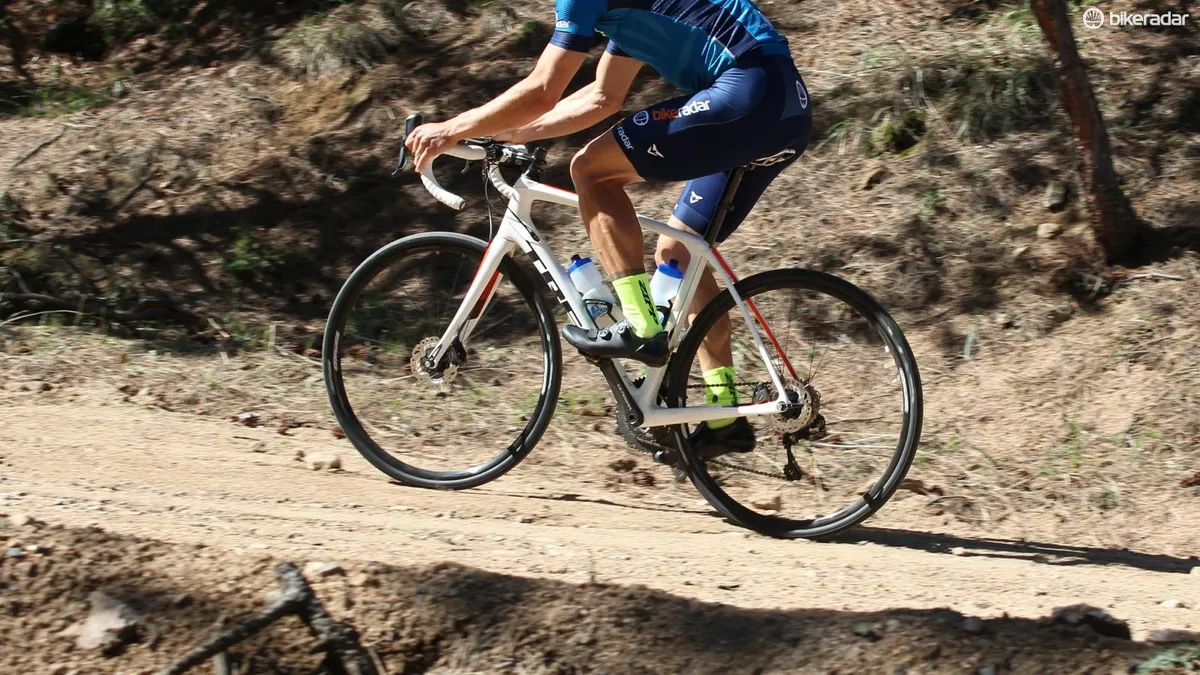
Two five-star machines
After some thorough testing, I gave the Domane SLR 7 Disc five stars and declared it the best endurance road bike. My colleague Warren Rossiter spent a lot of time on the new Roubaix and gave it five stars, and, you guessed it, declared the bike to be the best endurance road bike.
Aside from providing our readers with a laugh — you are both our favorite child — the two bikes do bring up an interesting discussion on design philosophy. Namely, should the bike or the rider be suspended?
Trek is hesitant to even call the Domane design suspension, but the big flexing seat tube is in effect a leaf spring, as is, to a lesser degree, the steerer that pivots fore and aft in the bolted headset. In any event, the frameset has some give, while the handlebar remains fixed in relation to the rider.
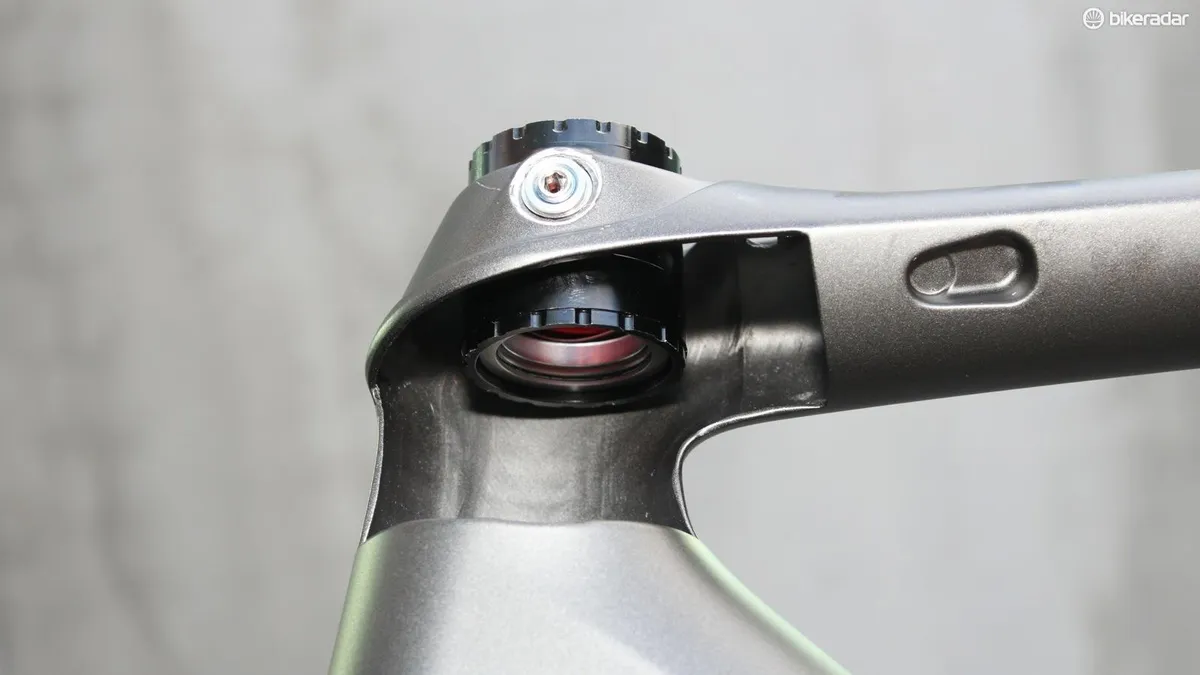
On the Roubaix, the front end of the bike is fully rigid — but the stem and handlebar ride on cartridge suspension. The bike’s rear is similar to the Domane, but with the cobra-looking CG-1 seatpost offering substantial fore/aft flex.
I was skeptical about the Domane design until I rode it; now I’m sold. I’m not light, but I can stand to climb or sprint on the Domane and the massive BB90-anchored frame doesn’t budge, nor seemingly does the handlebar when really reefing on it. But ride over nasty pavement or rough dirt and the bike — especially with low pressure in the fat tires — just floats.
I was even more skeptical about the new Roubaix with its bobbing handlebar. How could that not feel weird? However, after spending a few months on it and pointing the front wheel towards more and more dirt roads, and even tame singletrack, I’ve come to appreciate that the suspended handlebar can be a very good solution for many riders.
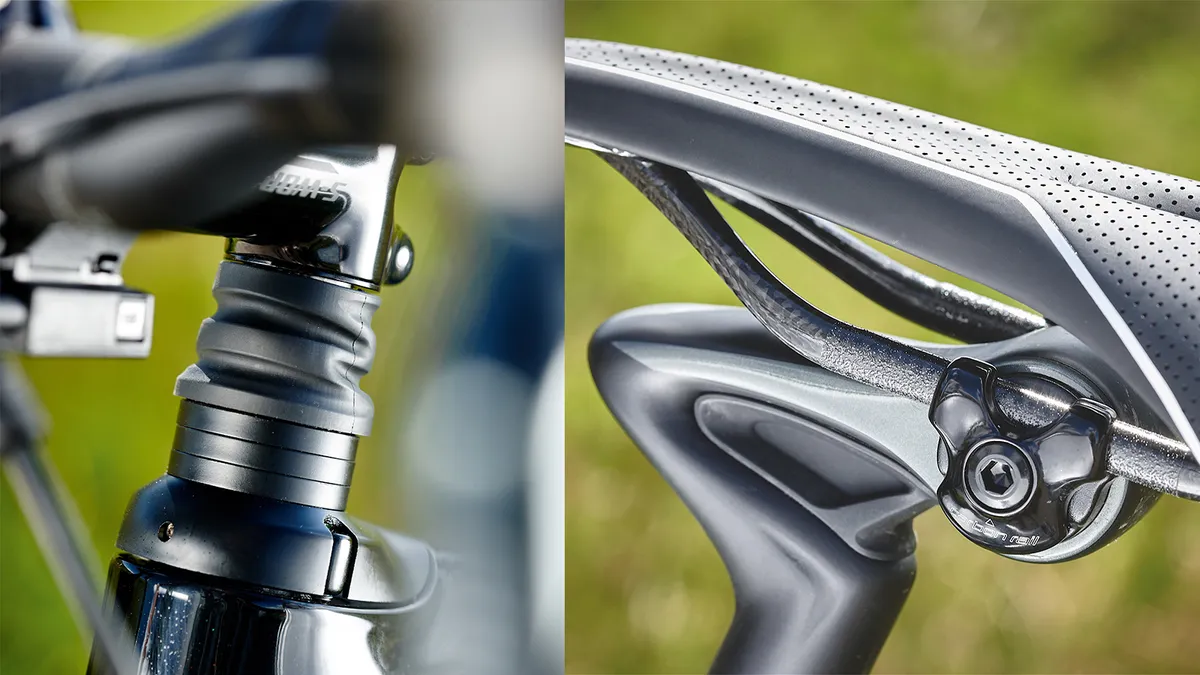
How much is the frame and how much are the tires?
Back when I was editor of VeloNews we did a lab test of four endurance bikes, measuring vibration with accelerometers while riding on lumpy rollers. The idea was to quantify comfort, as defined by reduction of a fixed level of vibration.
For years, the tires have been the best place to add comfort — go a little wider, reduce a little air pressure
The old Roubaix did the best by a wide margin, largely because it had 25mm tires while the others were shod in 23s. When we swapped wheels and tires the other bikes, like the Bianchi Infinito, were quite similar. (It’s funny that 25s seemed huge when we did that test in 2011.)
You have probably performed similar experiments with your own bike; less pressure, especially in wider tires, makes for a softer ride, right?

And comfort can certainly be injected into the mix at other points: the wheels, the seatpost, the saddle, the handlebars, the handlebar tape, the gel under the handlebar tape… and on and on.
But there is a limit to how much cushioning each one of these components can offer before a road bike just feels weird. No roadie wants a saddle that feels like a giant feather bed or handlebars that flex like taffy.
For years, the tires have been the best place to add comfort — go a little wider, reduce a little air pressure — without sacrificing the overall feel of the bike. One of the coolest things about disc brakes on road bikes is how much they open our options for rubber.
Old flex, new flex and lousy hardtails with drop bars
Adding some mechanical squish to a road bike isn’t new. The Pinarello Dogma K8-S with its elastomer rear suspension, for instance, is really just a rehash of the Klein design from 2001. The Cannondale Slate with a suspension fork? RockShox had suspension forks on road bikes at Paris-Roubaix in the early 1990s.
We’ve also seen a number of suspension designs at the stem and seatpost over the years. The most recent is the BodyFloat, which Californian Denise Mueller just used in her 147mph paced land speed record ride.
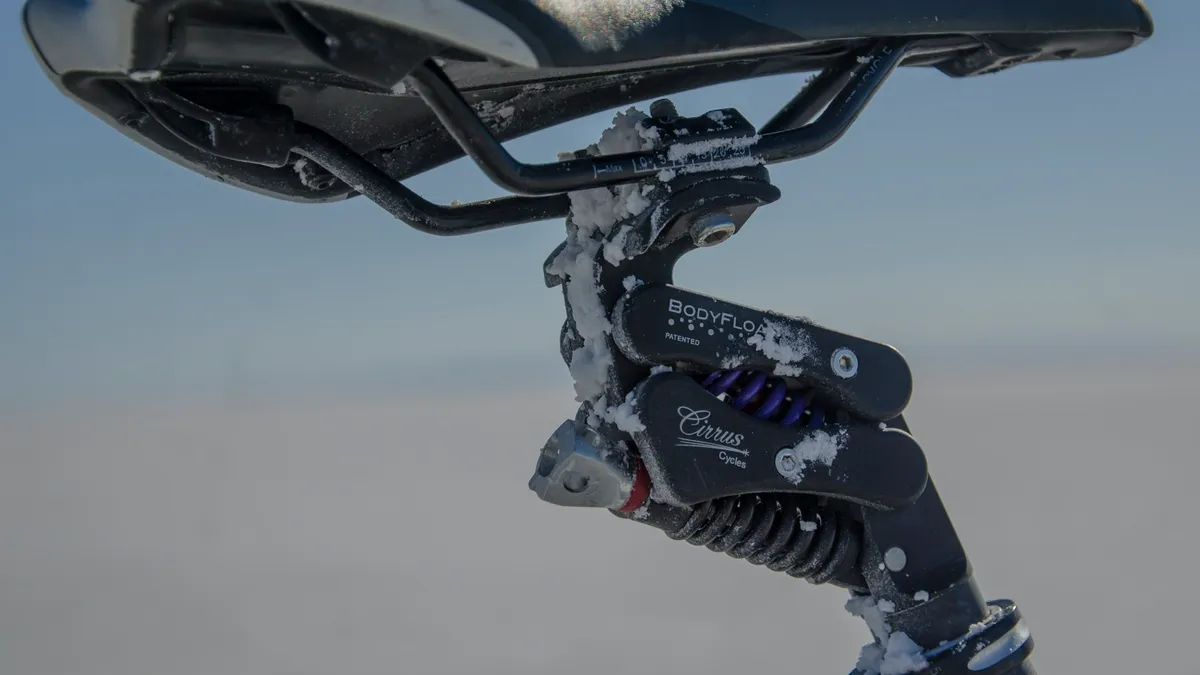
So why haven’t any of these designs taken hold? If smoother is indeed faster, and everyone likes to be comfortable, then why don’t we see widespread adoption of mechanical suspension on road bikes?
My colleague Oli Woodman cracks up at some of the more extreme examples of adventure road bikes where huge, knobby tires roll on a rigid frame with a short-suspension fork… with drop bars. “At what point is this just a lousy hardtail?” he asks.
Personally, I like seeing builders push the envelope. Even if 99.9 percent of us will never have a road bike with cartridge suspension, a good majority of us will appreciate the general trend towards making road bikes a little more comfortable.
Front end comparisons: spring vs. flex
Before you have even clipped in, the Roubaix feels like no other road bike. Press on the handlebars and they sag, then rebound. There are three spring weights, but all are undamped. A highly tuneable cross-country fork with compression and rebound settings this is not.
So, at first blush, this confirms many riders’ pre-ride impressions: this feels weird. Once riding, however, you don’t really notice the float when riding straight in the saddle. Think about riding a mountain bike — or driving a car for that matter — bumps get absorbed and that’s a good thing.
Even rhythmic climbing isn’t off-putting. Yes, the bars move a bit, but the bike still feels connected.

The Domane handlebar, on the other hand, will do exactly nothing if you press on it before climbing aboard. But when you hit a hard bump, the front end slightly reduces the jarring. It is far more subtle than the deep bow of the rear end, but it is perceivable.
Where the Roubaix feels weird to me is hard breaking before or diving into hard corners. The front end dips and my gut feeling is always that my tire has gone soft. It’s hard to tease out how much is old habit from what just isn’t a refined design.
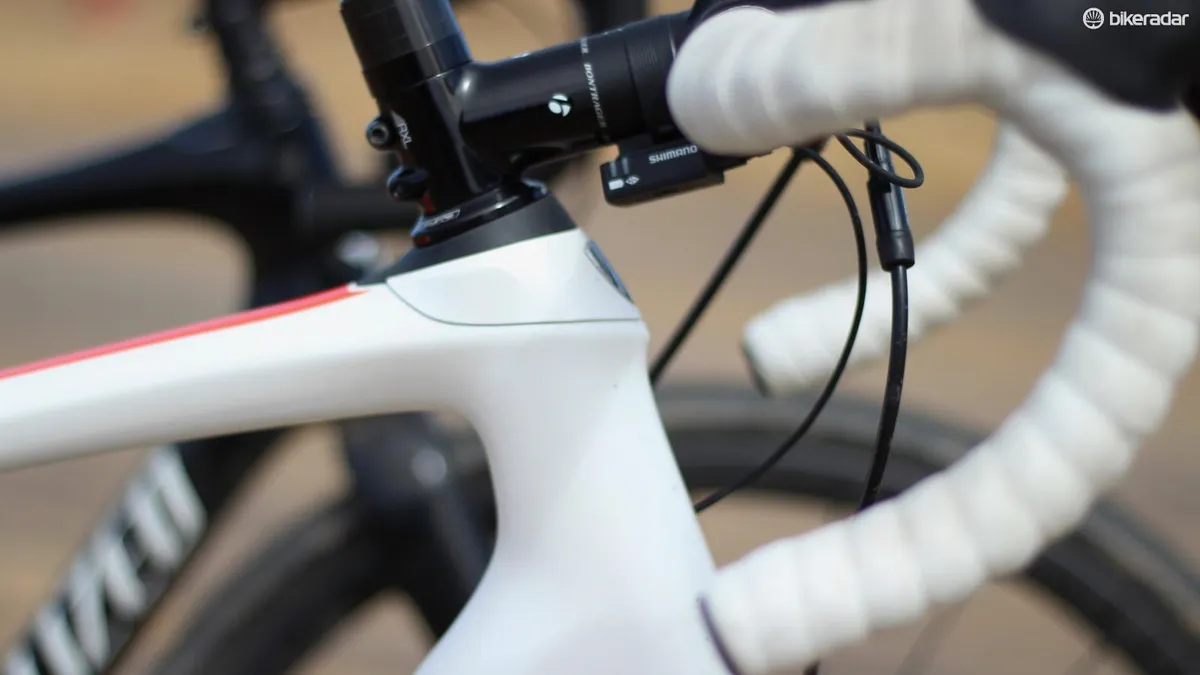
Roubaix flexing seatpost vs. Domane flexing seatmast and seat tube
The original Domane debuted Trek’s IsoSpeed concept where the the seatmast and the seat tube are free to bow as one, flexing from near the bottom bracket all the way up to the saddle, pivoting on the ‘IsoSpeed Decoupler’ pivot at the junction with the top tube and seatstays.
The new Domane refined this with an adjustable design, which effectively shortens or lengthens the amount of seat tube that flexes.
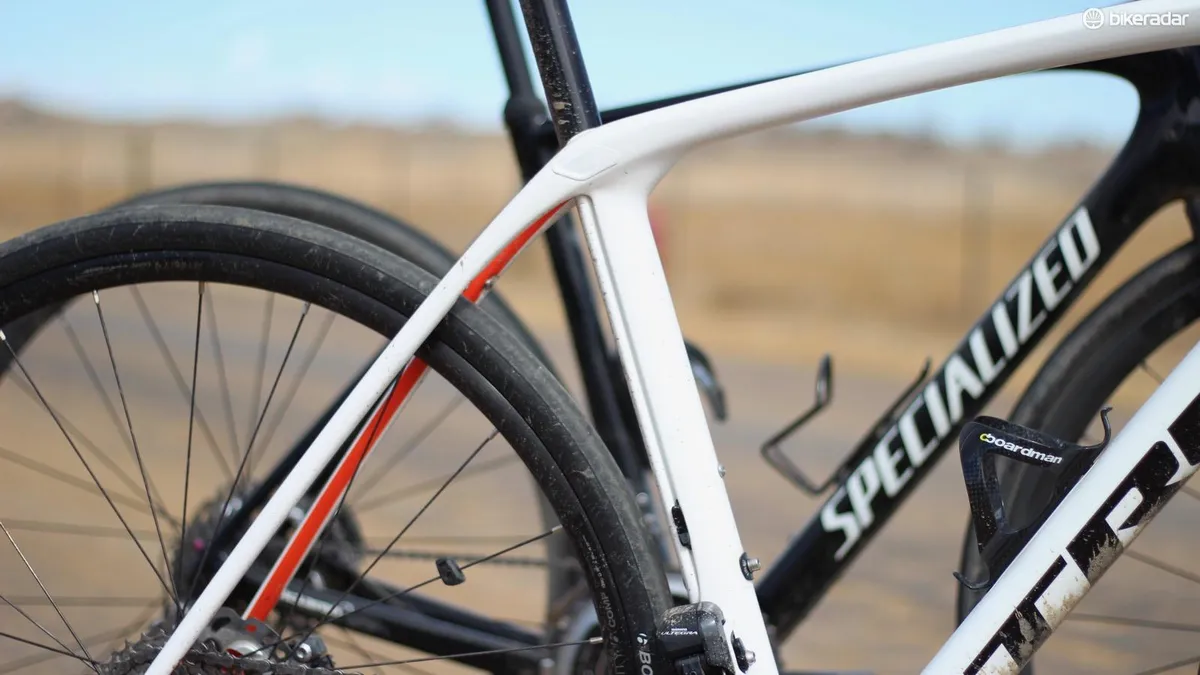
Specialized’s ‘cobble gobbler’ CG-R seatpost does a similar thing, but with the lower point of the flex determined by the seatpost collar. In past Roubaix bikes this was in the relatively traditional spot above the top tube. On the new bike, this two-clamp collar is down below the top tube. The seatpost has roughly twice the flex of a regular carbon post.
Here, the Domane and the Roubaix are much more similar than they are up front. Hit a hard bump while in the saddle and your weight will sag down into the bike just a little.
Generally, this is a positive thing. There is no need to feel the contours of every pothole in your pelvis.
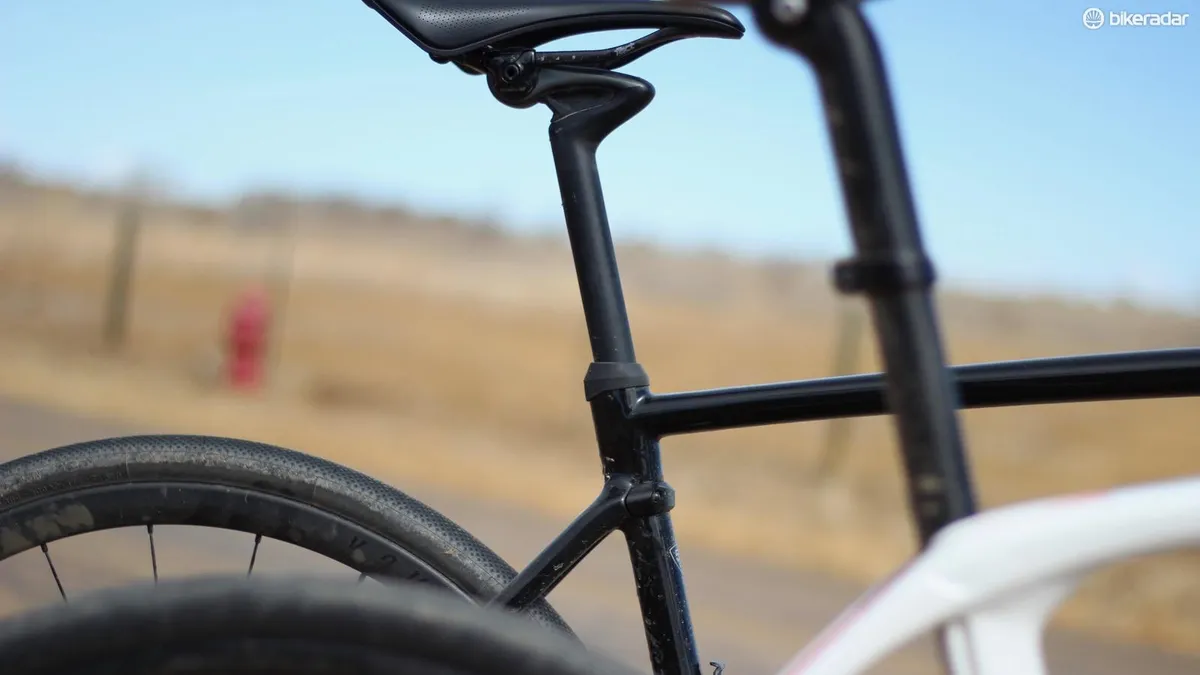
In two situations, the massive flex on both bikes caught me a little off guard. Sprinting hard in the saddle (the Domane I tested had a compact and I like to sprint my friends because I’m a child) you can generate the same flex that a bump induces, which on flat ground feels like you may have a flat — and that you should stop sprinting. Similarly, hitting a bump mid corner causes the saddle to drop a little, approximating the sensation when your tire is going soft.
Geometry comparisons
As with shoes, if your bike doesn’t fit you right, it doesn’t matter how much wonderful technology it contains. Specialized and Trek initially aimed these disc machines at the endurance market, with more upright geometry.
Trek also had a race geometry version of the Domane in rim brake and in late March added race geometry for the disc version, too.
The Roubaix’s suspension design means you can only get the front end so low, although swapping to a flat bar (as shown here) from the riser bar will chop off 2cm.
Specialized Roubaix vs. Trek Domane — here's Warren's take
Roubaix: probably best for recreational riders and maybe even some off-road rowdies
I have enjoyed watching the reactions of fellow staffers at BikeRadar and friends at other magazines and websites to the Roubaix. The initial reaction was a near-universal, what the hell? But quite a few of us have come round to appreciating a softer ride — and/or pushing the bike into chunkier terrain.
It seems this bike is best suited to two different groups of riders. Recreational riders who are looking to get in some good miles on the open road by themselves or with a small group of friends will probably really enjoy the Cadillac ride.
On the other end of the spectrum, some mountain bikers who enjoy being in the dirt could probably appreciate the bike for its abilities — and not be put off by the idea of suspension. (Others might scoff at the primitive spring design.)
I found myself taking the Roubaix on rougher and rougher terrain. I put on 32mm cyclocross file treads, pumped them to 40psi and rallied the thing on singletrack. Switching back to the Domane, the hard bumps felt much harder and left me more with the thought that I probably shouldn’t be riding a road bike on a trail.
Domane: probably best for aggressive road riders and traditionalists
The Domane doesn’t look or initially feel all that different from a normal road bike, which makes it more appealing to racers and traditionalists.
When you stand up and sprint, the bike goes. There is zero bobbing. When you dive into corners, the handlebar remains in a fixed position.
The suspension at the front is much more subtle than the Roubaix’s, which makes it more predictable if also harsher.
The rear can be tuned to your liking, whether you want to adjust it for the day or just set it and forget it.
And now with the race geometry option, the Domane is definitely a better fit for those who like to pin on numbers.
So which sounds like the better bike for you? Roubaix all day or Domane for the money?
